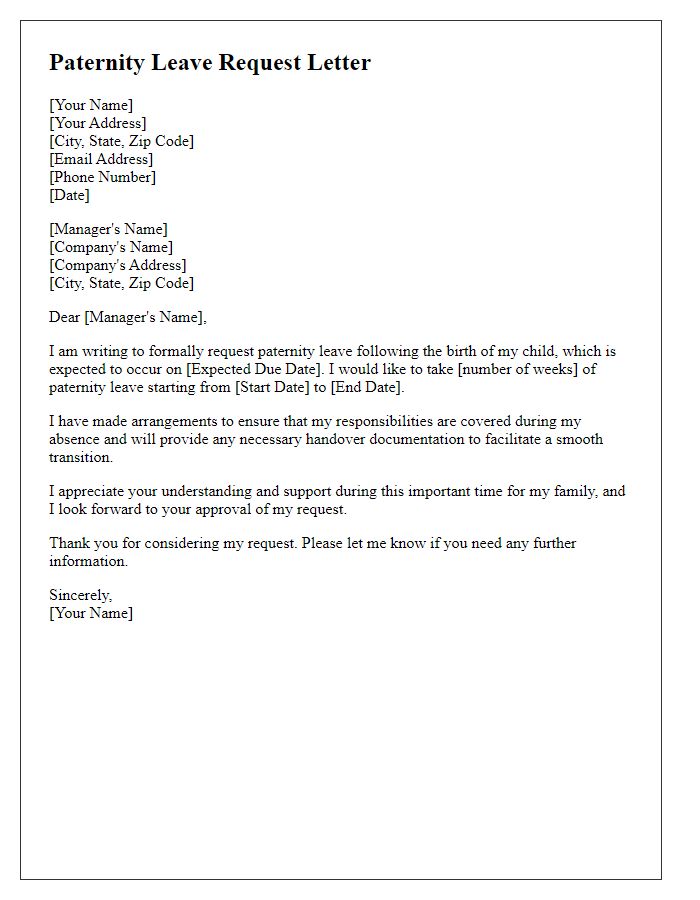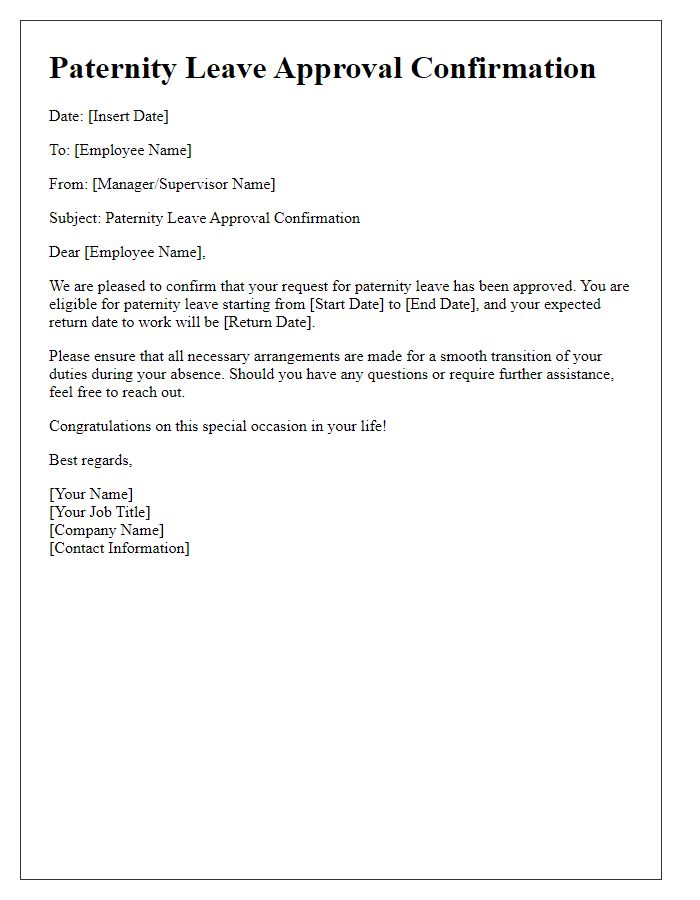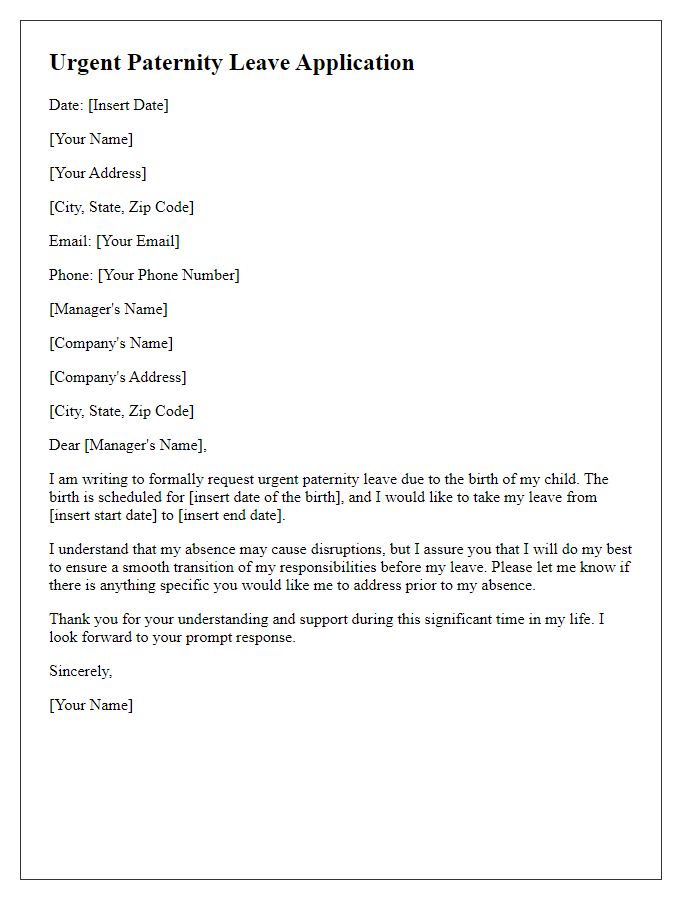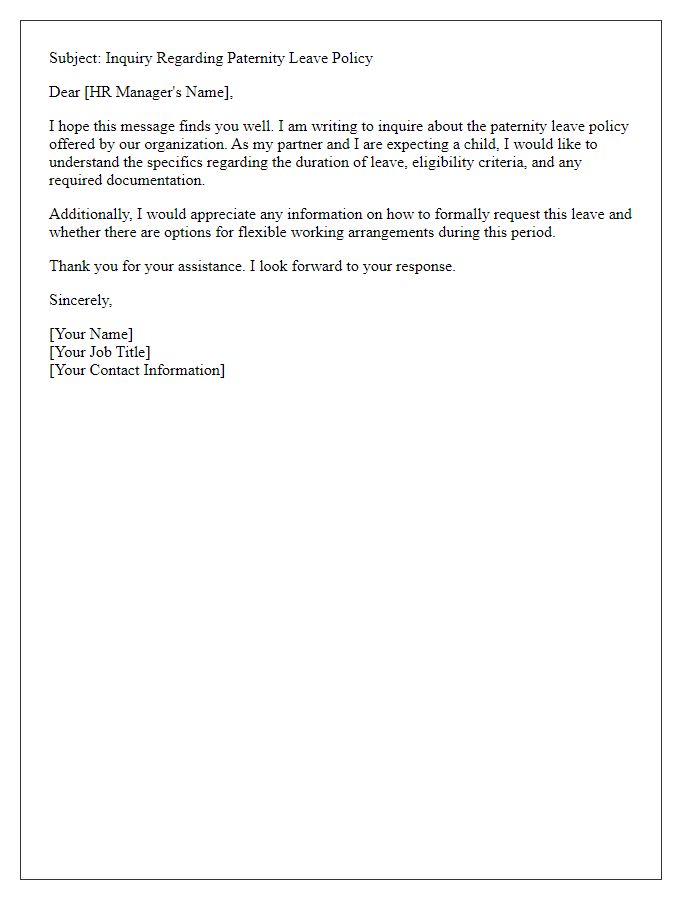Navigating paternity leave can be both exciting and a bit overwhelming. As new fathers, it's essential to understand the steps needed to secure your time away from work to bond with your little one and support your partner. Whether you're drafting a formal request or simply looking for guidance, knowing the right way to approach your employer can make all the difference. Ready to dive deeper into the process? Let's explore the ins and outs of writing a paternity leave approval letter!

Clear request for paternity leave duration.
Paternity leave is essential for new fathers to bond with infants. A typical duration includes two to four weeks, aligning with company policy. During this period, employees can help partners in caregiving while adjusting to family dynamics. Organizations often require formal requests in writing, specifying the intended leave dates. Clarity in the leave request ensures smooth processing and adherence to company protocols. Approvals can vary based on company size (Small businesses vs. Corporations) and local labor laws, impacting timing for new responsibilities.
Proposed leave start and end dates.
Paternity leave policies, vital for new fathers, are often contingent upon specific company guidelines. Proposed leave typically ranges from one to several weeks, reflecting a commitment to parental responsibilities. For example, an employee might request leave starting from March 15, 2024, and ending on March 29, 2024, aligning with the expected birth date of a child, enhancing family bonding. In organizations like Google or Facebook, paternity leave often extends to 12 weeks, offering flexibility for new fathers. These policies support work-life balance, promoting employee well-being and retention rates. Notifying the human resources department well in advance is crucial to ensure smooth transition and proper staffing during the absence.
Plan for work coverage during absence.
Effective planning is essential during paternity leave to ensure seamless operations in the workplace. Assigning temporary responsibilities to specific colleagues guarantees coverage of essential tasks. Preparing a detailed handover document outlining ongoing projects, key contacts, and critical deadlines enhances communication. Notifying clients and stakeholders, like the marketing team and supplier contacts, about the leave period helps manage expectations and maintain relationships. Setting up an out-of-office email response indicates unavailability while providing alternative contacts ensures urgent matters are addressed promptly. Organizing catch-up meetings before departure allows for a smooth transition and clarifies any outstanding issues for colleagues involved in the coverage.
Contact information during leave.
Paternity leave serves as an essential period for new fathers to bond with their newborns and support their families. During this time, communication remains crucial for work continuity and addressing urgent matters. Employees typically provide contact details such as personal phone numbers or email addresses, ensuring availability for unforeseen situations. This communication can facilitate a smoother transition of responsibilities, particularly in roles requiring immediate attention or decision-making. Furthermore, designating a colleague as a point of contact may help maintain workflow and address any pressing workplace needs while the employee is on leave.
Gratitude and willingness to discuss further.
Paternity leave is essential for new fathers to bond with their newborns and support their partners during the postpartum period. Many companies establish policies to offer up to 12 weeks of leave, aligning with Family Medical Leave Act guidelines. Effective communication regarding paternity leave approval is crucial, reflecting on the importance of family support. Expressing gratitude for understanding and showcasing willingness to discuss options further promotes a welcoming workplace culture. Proper planning helps minimize disruption and allows for smooth transitions in responsibilities among team members during the leave period.













Comments